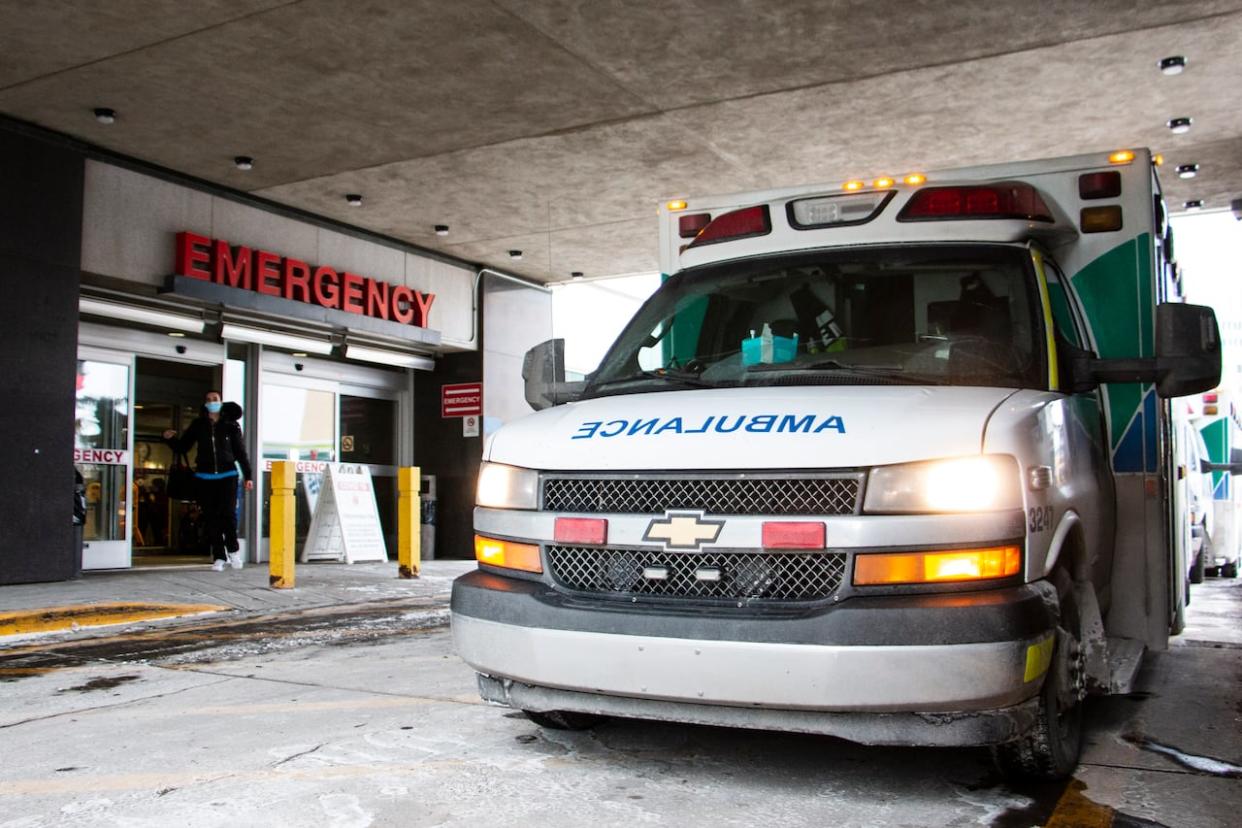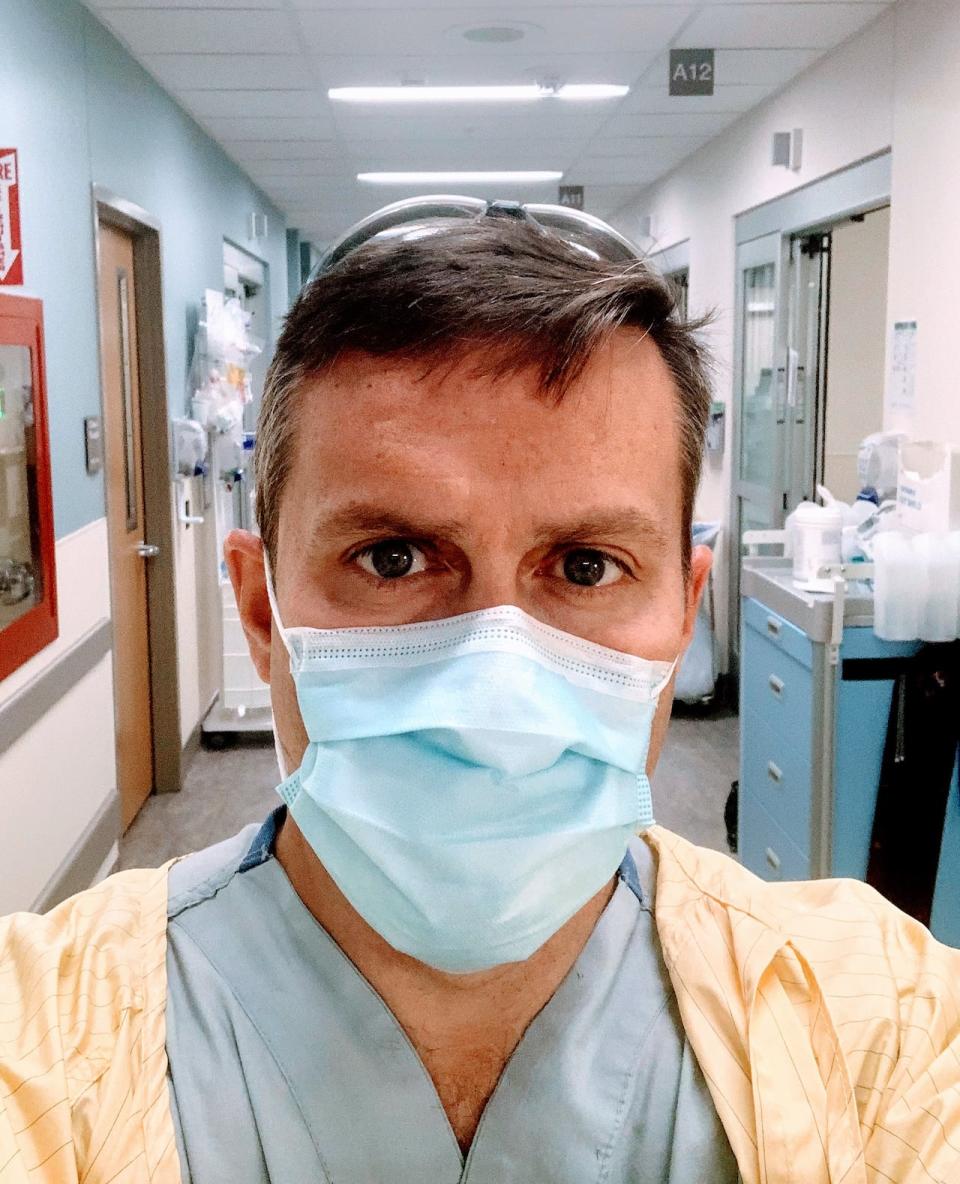Alberta hospitals already in 'disaster' mode as virus season picks up, doctors warn

Alberta doctors are raising the alarm about overwhelmed emergency rooms and overcrowded hospitals as respiratory viruses surge.
"None of us have seen this level of strain," said Dr. Paul Parks, president of the Alberta Medical Association.
"We're in a state of complete dysfunction. And we're worried about the state of timely and safe care."
Hospitals were already struggling before viral transmission — driven by influenza, COVID-19 and RSV — kicked into high gear, and Parks warned they don't have the capacity to deal with a further influx of patients.
Alberta's big city ERs are often filled with admitted patients who are stuck there because there are no free beds on the wards.
"We've been functioning in some wards at 130-150 per cent capacity as the new normal. It's gotten to the point where it's months like that," he said.
According to Parks, some patients can wait up to 19 hours for emergency room care as a result.
"With the added burden of respiratory illness and really sick patients, we're getting to where there's no give anymore."

Dr. Paul Parks is president of the Alberta Medical Association. He works as an emergency room physician in Medicine Hat. (Submitted by Paul Parks)
For example, Parks said the ER at Edmonton's University of Alberta Hospital, which is funded for 60 to 65 spaces, was recently looking after 76 admitted patients — including two children on ventilators — while dozens more waited to be seen.
The ER had to double bunk patients and eventually ran out of stretchers, he said.
Chemotherapy delays
Front-line staff worry about the toll on patients.
Parks said he's been told pediatric chemotherapy treatments have been delayed in Edmonton due to the capacity problems and some non-urgent surgeries have been postponed in the province.
"We have been doing a lot of things that fall into our disaster plan," said Parks.
Alberta Health Services (AHS) confirmed a "small number" of children in Edmonton have faced delays in the start of their chemotherapy series.
"There was no clinical impact on the patients, who have all begun their treatment programs within desired clinical timelines," an AHS spokesperson said, adding all patients requiring chemotherapy are receiving it within the appropriate timelines.
"We apologize for any inconvenience caused to the patients and their families."
The health authority said, however, no surgeries have been delayed due to the capacity issues.
Hallway medicine
"I think everyone's feeling the stress because you want to get everyone seen but it's so hard to get everyone through," said Dr. Arun Abbi, an emergency room physician who works at Calgary's Peter Lougheed Centre and Foothills Medical Centre.
According to Abbi, there are often between 50 and 70 patients waiting to be seen when he shows up to start the night shift.
He's treating a lot of influenza, COVID-19 and RSV as well as seeing many patients who are very sick due to delays in care and others who are struggling with mental health concerns.
"It's kind of like digging out of a hole that you're never going to get out of. I think it's going to be a long winter."
Parks, who works as an ER physician in Medicine Hat, said inpatient units across the province are squeezing in surge beds wherever they can make room.
"You may be cared for in hallways. Your entire care might be done in hallways. You might get admitted up to operating rooms from our waiting rooms in our emergency department," he said.
"It's very different right now because the system is so stressed and our teams are trying to do as best as they can with really, really challenging situations."
AHS said it's adding beds and staff as well as expediting transfers to continuing care homes in an effort to free up space.
Patients are also being transferred to rural hospitals.
"We are working hard to repatriate patients back to care facilities closer to their homes in order to free up space in our urban hospitals, and in some cases are sending appropriate patients to rural facilities for care," an AHS spokesperson said in an email, adding no patients will be turned away.
"We recognize that decisions like this aren't easy on families and support systems, but these measures are required in order for us to continue to maintain capacity at our hospitals and deliver timely care to those who need it most."
The Alberta Medical Association (AMA) is calling on the province to act quickly to address hospital capacity problems and overwhelmed ERs.
In a social media post on Monday, Health Minister Adriana LaGrange said priority is being given to the sickest patients.
"As we navigate through the challenges presented by the ongoing respiratory virus season, I want to assure you that the health and well-being of Albertans is our top priority," she said.
LaGrange added she has been in constant contact with AHS leadership and the AMA to discuss the acute care challenges.
Meanwhile, Parks said health-care workers are haunted by concerns that patients may end up slipping through the cracks.
"We all worry about those cases where if we could help someone and things were delayed and they don't make it … or they ultimately have very bad outcomes because of delays," he said.
"We are worried about how difficult the next two, three or four months will be."

 Yahoo News
Yahoo News 
